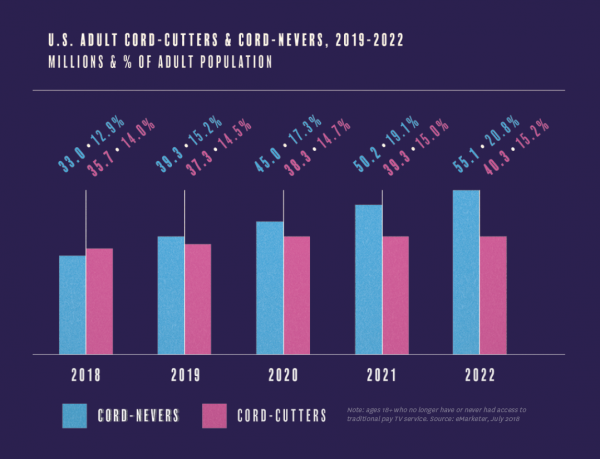How to adapt to the new world of cord-cutters and ad blockers.
In marketing, we have long held the belief in the traditional sales funnel. And while the core areas of focus haven’t changed, the process and order have. The consumer now bounces around and uses more sources during his or her discovery, consideration and buying process.
This shift has challenged marketers to change their approach in order to meet the customer where they are already, integrating into their lives in an authentic way.
Let’s break it down.
You have mass reach and awareness vehicles that introduce products and services, and this type of marketing generates a stimulus to kickstart the discovery process. But then there is a gaping hole for most brands until you get to direct response marketing tactics to drive purchase.
What we have found is the more time consumers spend with a brand, the better the return on investment is across all campaigns with sales. Increasing time spent with a brand, product or service is paramount in keeping the consumer moving within the sales process. Sure, a one-off offer will provide revenue spikes when needed, but a well-oiled marketing strategy will keep consumers flowing through all stages of the buying process simultaneously.
Most campaigns have three main goals: awareness, engagement and conversion. When focusing on engagement’s role in driving higher success rates, it is impossible to ignore the trends of ad blocking and cord-cutting. In other words, we have seen consumers go away from standard cable and become savvy to ways of blocking out clutter in their connected lives.

As consumer behavior shifts, we as marketers must shift. We are integrating connected TV, such as Hulu, Roku, etc., into media plans to ensure we aren’t missing large portions of the target audience. These placements – unlike terrestrial TV/radio – also facilitate more engagement, because the multi-screen platforms allow us to layer in digital ads. This encourages clicks, which allows us to learn more or drive purchases.
The streaming platforms were once in early adoption, but we are now seeing cord-cutting hit the masses. And with the new Generation Z, we’re seeing cord-nevers. An omni-channel video approach is the best way to be where the consumers are, with the right content to exceed their expectations.
“One in four U.S. internet users say they block ads, which is equivalent to more than 70 million people. The growth in ad blocking has slowed significantly, but it is still rising, and the same frustrating ad experiences that have driven consumers to block ads continue to be a problem” according to Nicole Perrin in her December 4th, 2018 eMarketer report “Demanding a Better Ad Experience.”
In addition to the rise of connected TV, the opposite trend has also emerged – the adoption for ad blockers has become more and more popular among the millennial generation. And with the need to increase reach and frequency of our marketing messages, we have adapted to change how people connect with our brands.
Bozell has begun including more and more native placements to our plans. Native ads follow the same form and function as web content, so it is not blocked by the ad blockers. Native ads also create an opportunity for the marketer to not just tell consumers about its products or services, but also allow them to show it through longer-form content. Plus, it’s in context and provides value and utility for consumers beyond selling. The most important person in any campaign is your customer, so by beginning at the end with our audience, and adapting to consumer behaviors, we are able to develop more than sales; we can develop better relationships, loyalty and facilitate brand advocates by arming them with content to disseminate.
Your MVP: The Customer
These trends have squeezed advertisers to innovate and focus on content as a way to connect with consumers. It drives time spent with an ad and moves users into the intent and purchase phases.
The success of content is measured in reach and frequency, time spent with the content, video views, clicks to learn more, sign-ups for lead generation and more. The measurements should be set up in direct correlation to the strategy and business objectives. Key performance indicators should be identified to optimize throughout the life of the content. This ensures it is working as hard as you did crafting it. The good news is, if content is crafted with a long view of uses, it can be adapted overtime and repurposed to be just as relevant on day 300 as it was on day one, which provides a higher ROI overtime.
So, as a brand, you should ask yourself: Not only are they aware, but do they understand how my product benefits their lives? Then create an engagement strategy to meet them at the right time, in the right place, with the right message.
Content Marketing gets 3x More Leads Than Paid Search Advertising.*
Content as the “next frontier” infiltrates every facet of marketing – whether that be a native article in the WSJ, a blog post with tips on your website, or a white paper to drive qualified leads to download content. It can and should be leveraged throughout each campaign and strategy. Content has been king for a long time, but we are now seeing it become a mandatory rather than an option. The industry is transforming to become communicators, not just marketers selling a product or service.
To take advantage, create content that provides value to the consumer. Shift the focus from key differentiators of your product to clear unique benefits. And make sure your content is entertaining, provides a utility, or answers a need for the consumer.
*Content Marketing Institute, 2017




